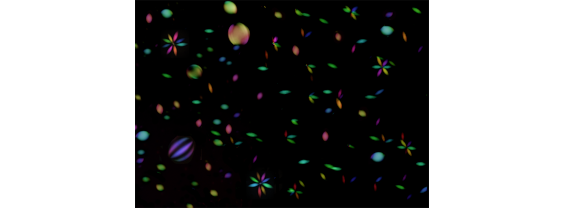Amyloid Fibrils Length Controls Shape and Structure of Nematic and Cholesteric Tactoids

Amyloid fibrils offer the possibility of con trolling their contour length, aspect ratio, and length distribution, without affecting other structural parameters. Here we show that a fine control in the contour length distribution of β-lactoglobulin amyloid fibrils, achieved by mechanical shear stresses of different levels, translates into the organization of tactoids of different shapes and morphologies. While longer fibrils lead to highly elongated nematic tactoids in an isotropic continuous matrix, only sufficiently shortened amyloid fibrils lead to cholesteric droplets. The progressive decrease in amyloid fibrils length leads to a linear decrease of the anchoring strength and homogeneous tactoid → bipolar tactoid → cholesteric droplet transitions. Upon fibrils length increase, we first find experimentally and predict theoretically a decrease of the cholesteric pitch, before full disappearance of the cholesteric phase. The latter is understood to arise from the decrease of the energy barrier separating cholesteric and nematic phases over thermal energy for progressively longer, semiflexible fibrils.
Reference
